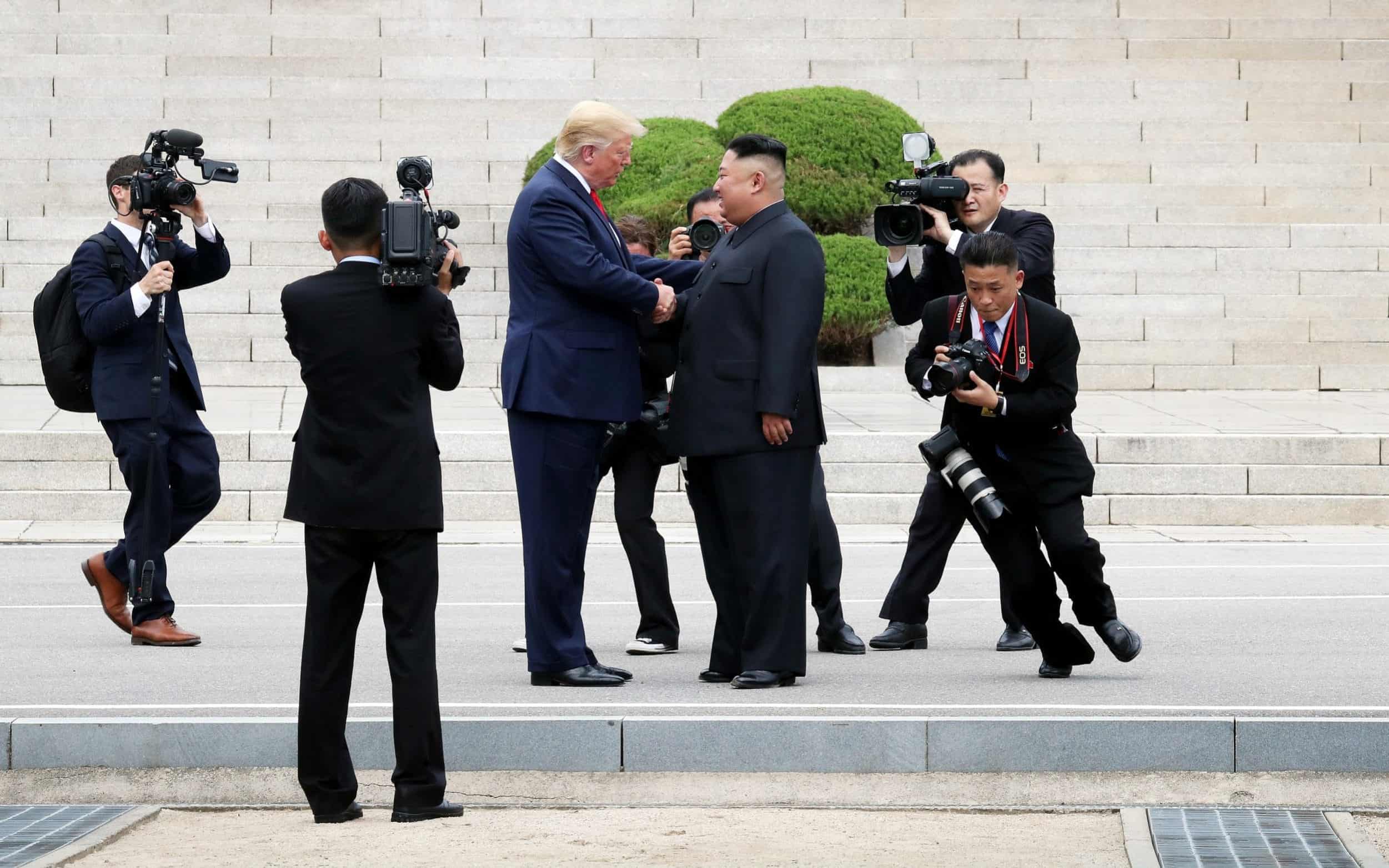RAND: North Korea Holds Most of the Cards in Nuclear Negotiations with U.S.

This year, North Korea has been reminding the United States that the window of opportunity for negotiating a nuclear deal is slowly drawing to a close.
In a speech delivered to the Supreme People’s Assembly in April, Kim Jong Un warned Washington that he would be “patient and wait till the end of this year to see whether the United States will make a courageous decision.”
This courageous decision, otherwise called a “new calculation” by Pyongyang, is not a difficult riddle. Rather, the fatal challenge resides in Kim’s twin desires: he wants to keep his nuclear weapons and missile programs largely intact while receiving sanctions relief. The consequences of such a lopsided agreement would not only bring costs for U.S. and South Korean interests; it could also lead to a major shift in the power balance and long-standing alliances in Northeast Asia.
Kim, fully knowing that his proposal would pose a dilemma to Washington’s decision-makers, dialed up the pressure another notch, adding that it would be “definitely difficult” for the United States to get an opportunity comparable to the package he offered at his February summit with U.S. President Donald Trump in Hanoi.
Adding to the suspense, his U.N. ambassador recently threatened denuclearization would be off the table in future negotiations with the United States.
While pressing this year-end deadline, Kim has expanded and beefed up his nuclear and missile programs; progressively weakened Seoul’s defensive preparation against the North’s nuclear and conventional military threats; and widened the wedge in the U.S.–South Korea alliance.
This year, Kim has conducted more than a dozen weapons tests, most recently announcing that his country had conducted a “very important test” at the Sohae satellite launching station that will alter its “strategic position.” Just one day before, satellite imagery indicated possible preparations to resume engine testing there. On Thanksgiving in November, Kim fired two short-range ballistic missiles toward the East Sea.
Pyongyang has signaled there would be more surprises forthcoming to force Washington’s decision-making in the negotiations. In case the United States is thinking twice about buying time, the North has ominously hinted it might send a “Christmas gift” to the United States.
Even solving the nuclear issue will not completely eliminate the North Korea problem. While Seoul dutifully carried out its end of the Inter-Korean Comprehensive Military Agreement—which aims to prevent military confrontation between the two Koreas—the North has surreptitiously fortified its military presence on the islands near the Northern Limit Line, a hair’s breadth away from South Korean waters.
Further, while criticizing U.S.–South Korea joint military drills and exercises, the North conducted its own live-fire drill on an islet less than 30 kilometers from South Korea.
The visibility and imminence of North Korea’s conventional military preparation have renewed anxiety among South Korea’s defense and security experts, who view these recent maneuvers as a precursor to a North Korean ambush of the South.
For Kim, an attack on the South may be a cost-effective tactic to test Trump’s resolve in the nuclear negotiations and Washington’s commitment to the region’s security, rather than a direct provocation of the United States.
As we move toward the new year, we can only expect North Korea to continue trying to force Washington’s hand into a disproportionate deal that allows Pyongyang to keep its nukes and missiles while still reaping economic and political concessions. Kim has a range of options to rattle his counterparts—from medium-range missile tests or an intercontinental ballistic missile launch to a nuclear test or perhaps a limited military strike against Seoul—and elicit a response from Washington.
The United States has a more constrained set of realistic options—concede sanctions relief to Pyongyang while turning a blind eye to Kim’s nuclear and missile programs, or keep raising tensions with the North.
Either way, Kim will get to hold on to his nuclear weapons and missiles, which he will use to repeat his cycle of provocations and negotiations until he reaches his ultimate goal of achieving nuclear power status and rupturing the U.S.–South Korea alliance.
Even once Kim’s year-end deadline passes, we will still be confronted with a nuclear-armed North Korea with greater leverage and greater determination to extort and intimidate the region.





